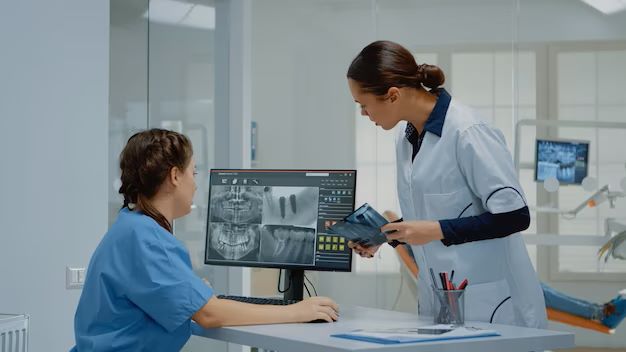Treatment Planning in Dentistry
Dental treatment planning is a crucial aspect of oral healthcare, involving the careful consideration of a patient's dental needs and the development of a comprehensive plan to address those needs. It encompasses various stages, from diagnosis to implementing the treatment plan, and requires the expertise of dental professionals such as dentists, periodontists, endodontists, and prosthodontists. Let's delve deeper into the process of treatment planning in dentistry and understand its significance.
What is a Dental Treatment Plan?
Understanding the diagnosis and treatment planning process is fundamental to comprehending the concept of a dental treatment plan. A dental treatment plan is a personalized roadmap designed by dental practitioners to address a patient's oral health concerns systematically. It outlines the proposed treatments, timelines, and expected outcomes based on a thorough assessment of the patient's dental health.
The formulation of a dental treatment plan is a collaborative effort involving the dentist, the patient, and other specialized dental professionals. By considering various factors and treatment options, the plan aims to restore and maintain the patient's oral health effectively.
Implementing the treatment planning process in dentistry involves meticulous consideration of the patient's immediate needs, long-term oral health goals, and the feasibility of the proposed treatments. A well-constructed treatment plan serves as a guiding tool that facilitates the delivery of appropriate and timely dental care.
How are Treatment Plans Developed in Dentistry?
In dentistry, the development of a treatment plan involves a comprehensive evaluation of a patient's oral health, considering factors such as the extent of dental caries, periodontal status, and any existing restorations. It also includes a thorough examination of the patient's oral hygiene practices, previous dental history, and overall dental health.
Evaluating treatment options for dental health is a critical phase in the treatment planning process. It entails assessing the available restorative treatments, considering the patient's specific needs and preferences, and determining the most appropriate course of action for achieving optimal oral health outcomes.
The planning process for restorative and operative dentistry focuses on devising tailored interventions to address dental problems, including caries management, restoration of damaged teeth, and root canal treatments. This phase aims to restore the structural integrity and functionality of the patient's dentition while promoting long-term oral health.
What to Expect from a Comprehensive Dental Treatment Plan
A comprehensive dental treatment plan typically encompasses three main phases: control, maintenance, and definitive. The control phase emphasizes the initial management of dental issues, such as lesion control and addressing acute oral health concerns, to stabilize the patient's dental condition.
The maintenance phase of the treatment plan focuses on ongoing monitoring and preventive care to ensure the long-term stability of the patient's oral health. It involves periodontal and soft tissue considerations, regular oral health check-ups, and promoting optimal oral hygiene practices.
In the definitive phase, specific treatments such as dental implants and dentures may be considered to restore missing teeth and enhance the function and aesthetics of the patient's dentition. This phase aims to achieve definitive and sustainable solutions for the patient's dental concerns, providing lasting improvements in their oral health.
Understanding the Role of Dental Professionals in Treatment Planning
The dentist plays a central role in creating and executing dental treatment plans, utilizing their expertise to diagnose oral conditions, discuss treatment options with the patient, and oversee the implementation of the chosen interventions. Their involvement ensures that the treatment plan is tailored to the patient's needs and aligns with their overall dental health goals.
Collaboration between periodontists, endodontists, and prosthodontists is vital in addressing complex dental cases and providing comprehensive care. Periodontists focus on the supporting structures of the teeth, endodontists specialize in root canal treatments, and prosthodontists deal with the restoration and replacement of teeth, each contributing their expertise to the overall treatment plan.
Implants and dentures often play a significant role in the definitive phase of dental treatment plans, offering durable solutions for tooth replacement and addressing functional and aesthetic concerns. The careful integration of these treatments enhances the overall effectiveness of the treatment plan in restoring the patient's dental health.
Treatment option selection and treatment planning wit AI
Treatment option selection and treatment planning with AI integrates various sources of data such as clinical, radiographic, and laboratory information to provide a comprehensive oral diagnosis and treatment planning. By analyzing everything you need to know about a patient's condition, AI can assist in clinical decision-making and treatment planning, ultimately improving the accuracy and effectiveness of dental care.
Importance of Ongoing Monitoring and Maintenance in Dental Treatment
After the initial phases of the treatment plan, ongoing monitoring and maintenance are essential for ensuring the sustained success of the interventions. Periodontal and soft tissue considerations in the maintenance phase focus on preserving the health and integrity of the supporting structures around the teeth, contributing to the long-term stability of the patient's dentition.
Lesion control and regular oral health check-ups during the maintenance phase enable dental practitioners to detect and address any emerging issues promptly, preventing the escalation of dental problems and promoting continued oral health improvement. Long-term dental care and oral health are sustained through consistent monitoring and maintenance efforts.
In conclusion, treatment planning in dentistry is a comprehensive process that addresses various facets of a patient's dental health, from initial diagnosis to the long-term management of their oral well-being. By formulating personalized treatment plans and engaging patients in their oral health journey, dental professionals strive to deliver person-centered care that prioritizes the restoration and maintenance of optimal oral health.
FAQ
What is treatment planning in dentistry?
Treatment planning in dentistry involves the process of identifying and prioritizing a patient's dental needs, developing a comprehensive plan to address those needs, and determining the appropriate sequence and timing of treatments.
How important is dental health?
Dental health is crucial for overall well-being. Poor oral health can lead to various systemic conditions and impact an individual's quality of life. Regular dental check-ups and proper oral hygiene are essential for maintaining good dental health.

What is quadrant dentistry?
Quadrant dentistry refers to treating one of the four sections of the mouth (quadrants) at a time. This approach allows for a more focused and manageable treatment, especially for extensive dental procedures.
What is oral diagnosis and how does it relate to treatment planning?
Oral diagnosis involves assessing the patient's oral health, identifying dental issues, and determining the appropriate treatments. It is a crucial step in the treatment planning process as it provides the foundation for developing a comprehensive dental treatment plan.
What are some key factors in determining treatment outcome in dentistry?
Several factors, including the patient's overall health, adherence to post-treatment instructions, and proper oral hygiene practices, can influence treatment outcomes in dentistry. Additionally, the skill and expertise of the dental professionals play a significant role in achieving favorable treatment outcomes.
How do digital tools aid in treatment planning?
Digital tools, such as intraoral scanners, 3D imaging, and treatment planning software, play a crucial role in modern treatment planning in dentistry. These tools enable more accurate diagnostics, enhanced treatment visualization, and efficient communication between dental teams and patients.
What are the main areas of focus in dental treatment planning for adolescents?
When planning dental treatments for adolescents, considerations such as orthodontic interventions, wisdom teeth assessment, prevention of dental caries, and education on proper oral hygiene practices are crucial. Additionally, addressing any developmental dental issues is essential for long-term oral health.
How does the 4th edition help in creating person-centered dental treatment plans?
The 4th edition provides updated guidelines and evidence-based practices to create person-centered dental treatment plans. It encompasses the latest advancements in dentistry, including the integration of digital technologies and a focus on individualized patient care.
What role does patient assessment play in developing appropriate treatment plans?
Patient assessment is fundamental in understanding the patient's oral health status, addressing their specific needs and concerns, and formulating a tailored treatment plan. It enables dentists to consider the patient's medical history, preferences, and expectations, leading to more personalized and effective treatment outcomes.
How can dental charts aid in treatment planning and tracking general dental progress?
Dental charts provide a visual representation of a patient's oral health status, including existing conditions, planned treatments, and treatment outcomes. They serve as valuable tools for organizing treatment plans, tracking progress, and facilitating effective communication within the dental team.
If you are interested in treatment planning, take a look at our Dental Automation article.





 Contact Us
Contact Us

